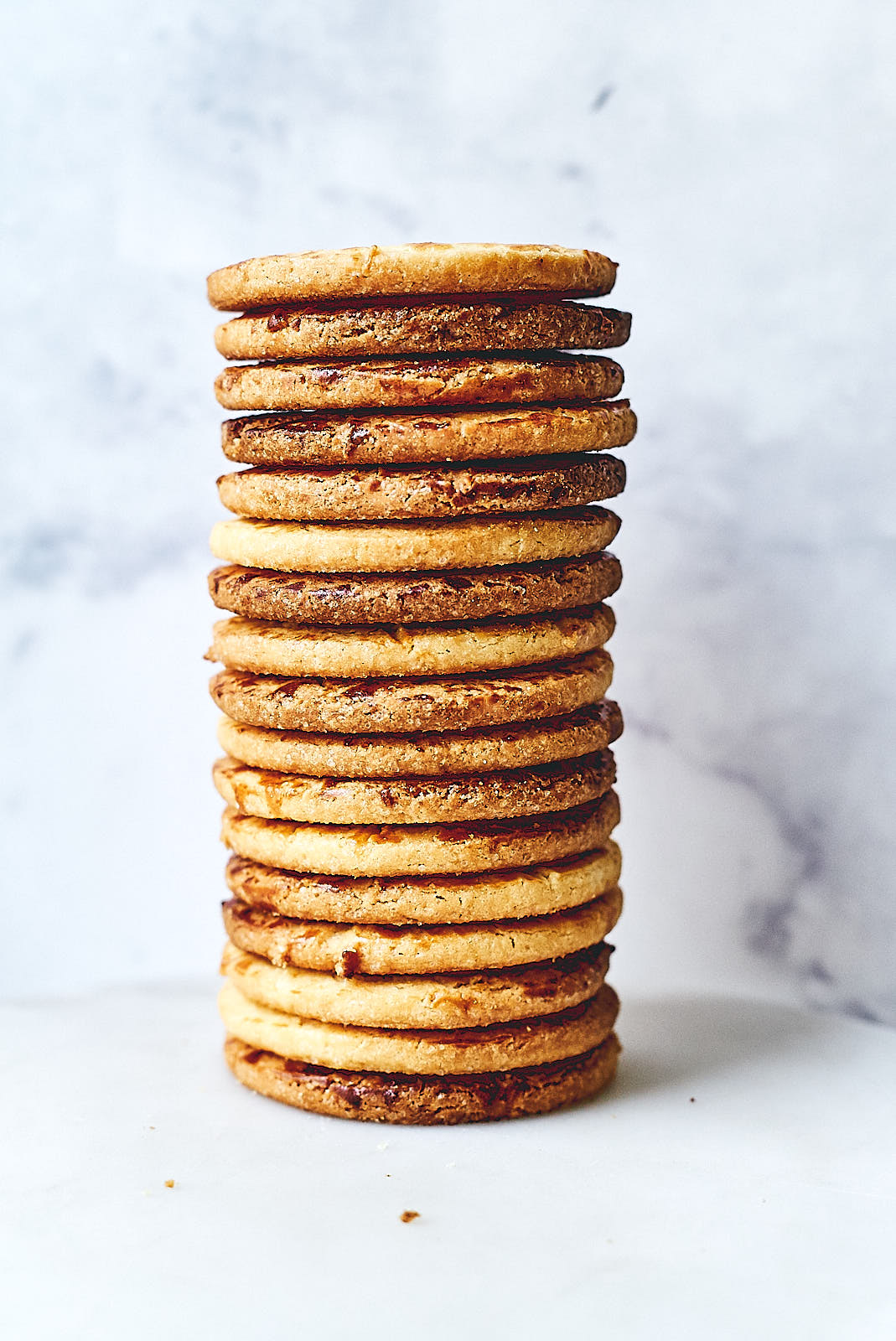The secret of simple. Sables Breton
It’s no secret that French people love, love, love butter. In one form or another, it’s always there: hiding in the sauce, cookies, layers of a croissant, baguettes, quiche, and bread. Even if some say loudly that they don't eat butter, there's a slight chance they do – just secretly – because butter to French is like potatoes to Peruvians. It is just there, no matter where you bite.
If you can avoid butter in sauces, baguettes and dinner dishes, there's no chance to do so with classic French cookies. A cookie would be no cookie without butter, and, although there is modern margarine, low fat-high fiber, flourless, and sugarless cookies, the real thing is still and will be a cookie with the proper amount of sugar (not too much, though), flour, lots of butter, and eggs.
Somewhere between those hundreds of cookies around the world, to be honest, there's nothing like a Sable Breton, which in translation means “sandy cookies”. Rather thick (but sometimes thin), extremely buttery, and lightly sandy – that is a Breton cookie that when eating feels nothing like sand… well, maybe just a bit, especially now that I understand the word “sable”.
As with every simple dish or food, the hardest part is to master it, especially today when pastry chefs are equal to movie stars. Everyone wants to have his or her “THE COOKIE” recipe the whole world talks about, but there are few who have succeeded. The rest arer happy with the good old version of butter mixed with egg yolks, sugar, and flour. The times when the cookie was all about sugar are gone, and though there will always be good old classics, some aim for a change.
A classic Sable Breton is pretty simple - both in finding ingredients and baking. Originating in Brittany, where butter runs like rivers and egg are a staple in the diet, the only thing left to find is sugar and wheat – let's be honest – there’s no problem in France with both those ingredients. To have the most perfect cookie, it is not about the ingredients (well, primarily it's always about ingredients), but it’s about getting the light-as-air, yet dense and sandy texture that melts in your mouth. Even if you follow the simple plan – lots of egg yolks and butter, followed by sugar and flour, it still needs to be mixed the right way to keep the airiness. Be aware, sometimes almond flour is used, too, but the golden rule of all golden rules is to use salted butter. You have to just sense the saltiness over the sweet taste, but it was not always like that. As with many sweets, it used to be sugar, sugar, sugar, but thank god, that has changed.
We can thank chefs like Lionel Poîlane, the bread guru, and Pierre Herme (there's no comment needed about him). Interestingly, Poilane always had Sables at the bakery, just by the register, to reward those who had been standing in line to buy bread. He learned to make little sable cookies from his grandmother, mixing the dough only with his hands (no machine) and on the surface like bread (no bowl or spoon).
Dorie Greenspan, author of Paris Sweets describes how Alsatian pastry chef André Lerch make Sables totally differently than Poilane. Poilane’s recipe is pretty straightforward – no vanilla or salt is added, but chef Lerch does it uniquely, using not only granulated but also confectioner sugar, believing that mixing the dough as little as possible is the trick to the best Sable. Pastry chef, the chef of chefs, Piere Herme has invented one more Sable version to talk about – with cacao, chocolate, and a little bit of fleur de sel.
Our Latvian French pastry guru, Julija Balicka (from Bel Etage bakery), says that there’s nothing special about making Sables Breton, just hands and that fine feeling about what you do. There’s no roughness, no rigid moves, no anger or hurry. Just purity, a light and delicate touch, but before that:
• You need to whip up the room temperature butter until it is white and light as a cloud;
• All the ingredients must be room temperature (actually – that is always the case if a recipe asks for a room temperature butter);
• There's no need to mix the hell out of the dough. You have to do it “nice and easy” as Tina Turner says in the song Proud Mary. The secret is to knead it together to the stage where it barely sticks together to keep the airy consistency that comes from the nice layers of flour, butter, and eggs;
• The easiest way to shape the cookies is to roll room temperature dough between two sheets of baking paper (3-3,5 mm thick), cut, and freeze them. After they are frozen, you can easily take off the cookies and separate them onto another baking sheet.
• There's one more thing – you have to brush the cookies before baking with egg yolk and milk wash (and if you have no salt in the cookie dough, then add some salt here).
In a world of so many truths and rights and wrongs, the same applies to Sables Bretons. One might claim that you should knead the dough; one will argue that that is the worst possible scenario; one will use only granulated sugar; but others a mixture of many. And, as always, some will not even tell their secret to making the perfect Sable Breton, other than baking them and making you wanna enjoy every last crumb. So it is up to you to find the best recipe, or at least the best patisserie to buy some.
Story and pictures: Signe Meirane
Camera: Sony Alpha 7s







